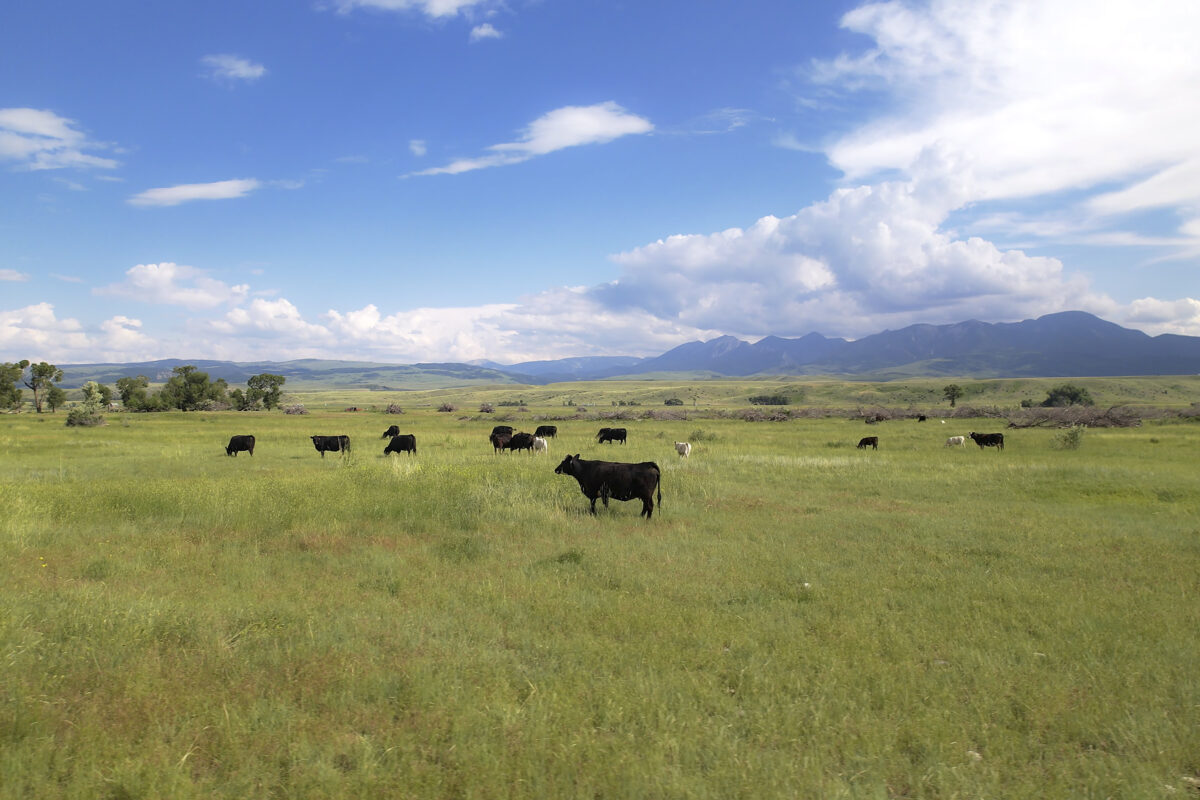In the United States, beef production starts on farms and ranches across the country. How does that beef get from pasture to plate—or to a Friesla Meat Processing System in between?
BREEDING & GENETICS
All beef calves in the U.S. are born on farms and ranches, the majority of which are family-owned.
The process of raising a calf starts long before it’s born, with the farmer or rancher making mating choices and planning for the genetic future of their cow herd. Each herd is different, and producers choose genetics based on what they need or would like to improve in their operation. These can be maternal traits like calving ease, disposition, or milk production, or terminal (or “carcass”) traits like marbling, yield, or ribeye area. In many cases, they’re a combination of both.

Many producers raise their own cow herds and replacement females—to replace old or unproductive cows—and purchase bulls to introduce new genetics and focus on the traits mentioned above. Producers choose bulls based on Expected Progeny Differences (EPDs) that are available when bulls are purchased at a bull sale.
Some producers will also choose to use Artificial Insemination (AI) instead of purchasing bulls and turning them out directly with the cows (natural service). Most producers who use AI are seedstock operations raising bulls and females to sell to other producers as opposed to a cow/calf operation selling cattle for beef.
CALVING SEASON
Once breeding choices have been made and the bulls turned out, the more tangible part of the process begins. Most producers choose to leave bulls on cows for 45-90 days to make it easier to manage the calving season. The majority of producers in the West calve in the “spring”—which can range between January and May—but some choose to calve in the fall depending on weather, feed availability, etc.
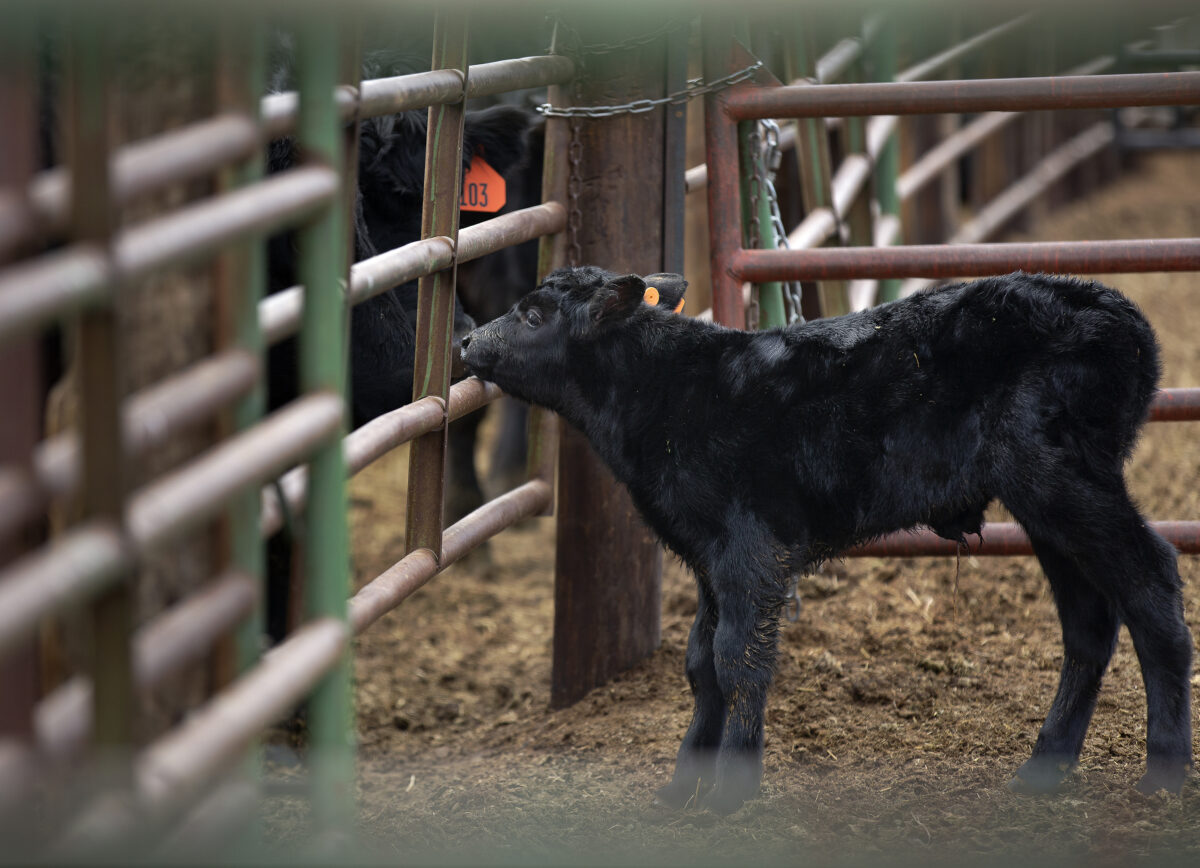
Regardless of when calving season occurs, all calves in the U.S. are born on cow/calf operations, which are predominantly family-owned. Cows have a similar gestation length as a human, so nine months after that cow is bred, she has a baby calf! Calving seasons can be a tough time for producers, especially if the weather is poor, because newborn calves can be fragile and there is a lot of hands-on work to do: regular checks, sometimes around-the-clock, assisting births when necessary, and often vaccinating and tagging at birth—in addition to regular chores like keeping the cattle fed and watered. Calving cows are typically kept close to the barn or in nearby pastures in case they need help, and then pushed to pastures further out once the calves are more mobile.
In brand states (all Western states plus Texas and part of Nebraska), calves are branded when they are around two months old. Post-branding, calves spend time with their mothers out on grass. By about 45 days of age, calves are still drinking milk but also consuming significant amounts of forage.
WEANING
When their calves are 6-9 months old, many farms and ranches wean them and, on average, about ⅓ of the females are retained as replacements. Up until this step, many operations look very similar but weaning is when paths can begin to diverge.
At weaning, there are three main tracks: wean calves onto a truck, keep calves on the farm/ranch and feed them for several weeks, or in the case of a grass-finished operation, turn the calves back out on grass.
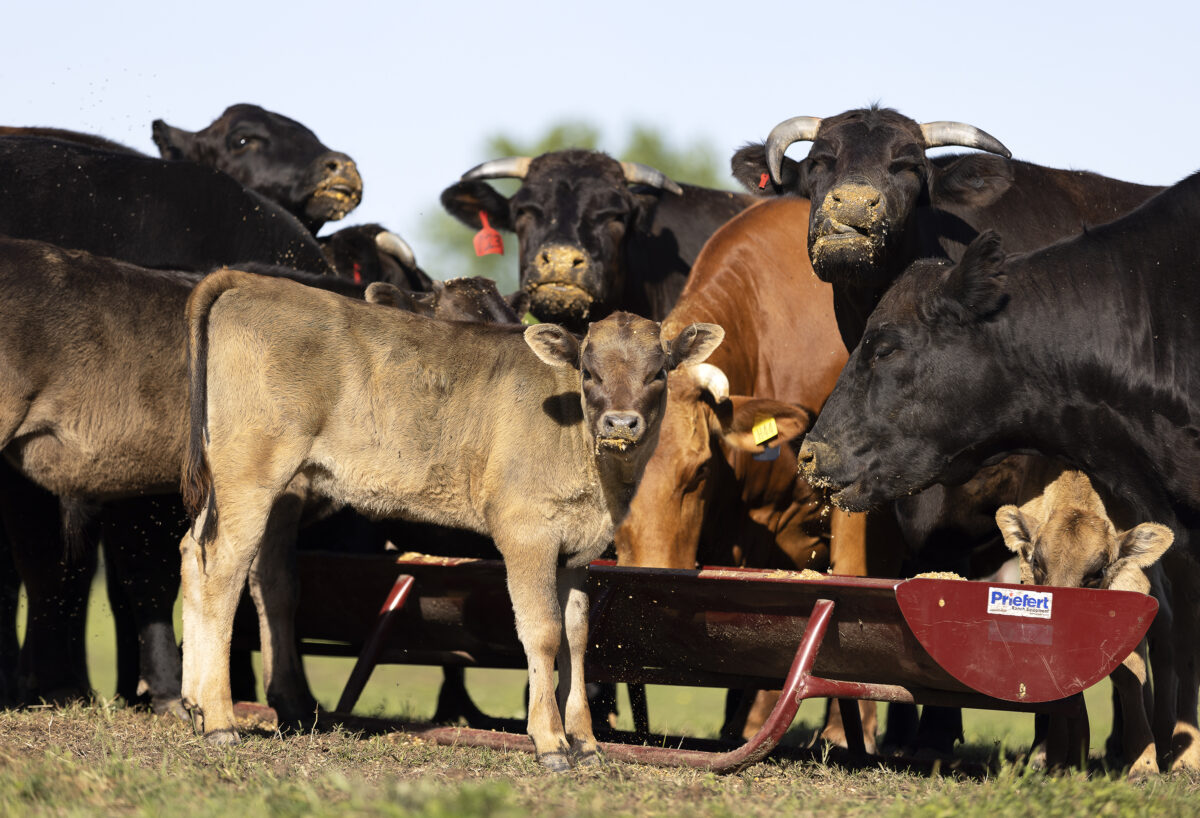
Weaning onto a truck means the calves will be sorted from their mothers and immediately loaded onto trucks and shipped to a backgrounding yard. A producer might choose this route if he doesn’t have the forage, space, or infrastructure to wean the calves on grass.
Other times, producers choose to keep their calves on the farm or ranch for around 45 days, where the calves primarily eat grass but may be supplemented with protein like creep feed or cow cake. This helps to facilitate weight gain before the calves are shipped to a backgrounding yard or feedlot. These calves generally fetch a premium price because they are larger, less prone to illness, and already started on a supplement.
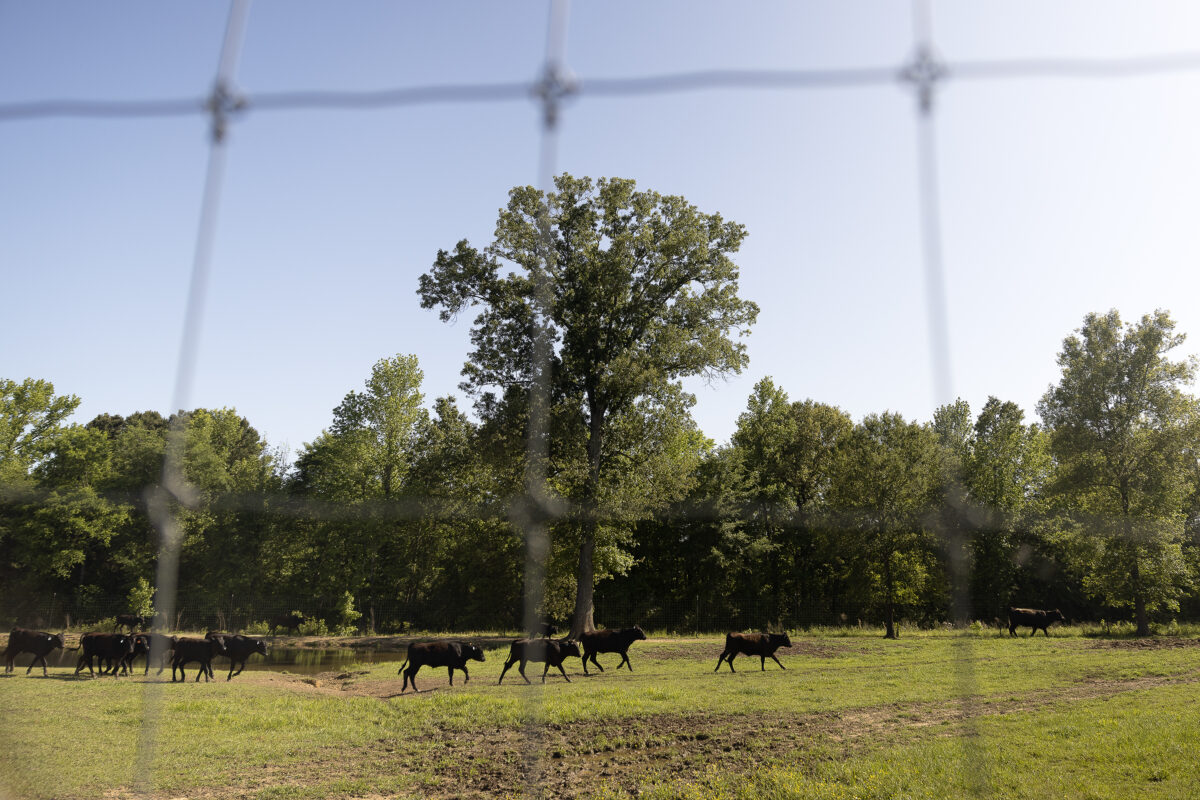
If the calves are finished on grass (e.g. for grass-finished beef), they are generally turned out on pasture—whether that is pasture at their origin farm/ranch, or a different operation that specializes in finishing calves on grass.
When calves leave the farm or ranch, it often also signals a transfer of ownership. The sale of calves can be contracted in advance, facilitated at a sale or auction, or through a transaction directly with a buyer. Some producers will retain ownership through feeding and market the calves themselves, but the majority of calves in the U.S. are sold before they enter the finishing stage.
FINISHING
There are two ways to finish cattle: on grain and on grass. Grain-finished beef comprises 96% of retail beef in the U.S., so it warrants addressing this first.
Calves typically begin the finishing stage between 800-900 lb. Since most calves are lighter at weaning, they often go to a stocker or backgrounder to grow first. Stockers and backgrounders can look many different ways, but most involve some degree of grazing forage or residues (e.g., cornstalks or wheat residues) plus a protein supplement.
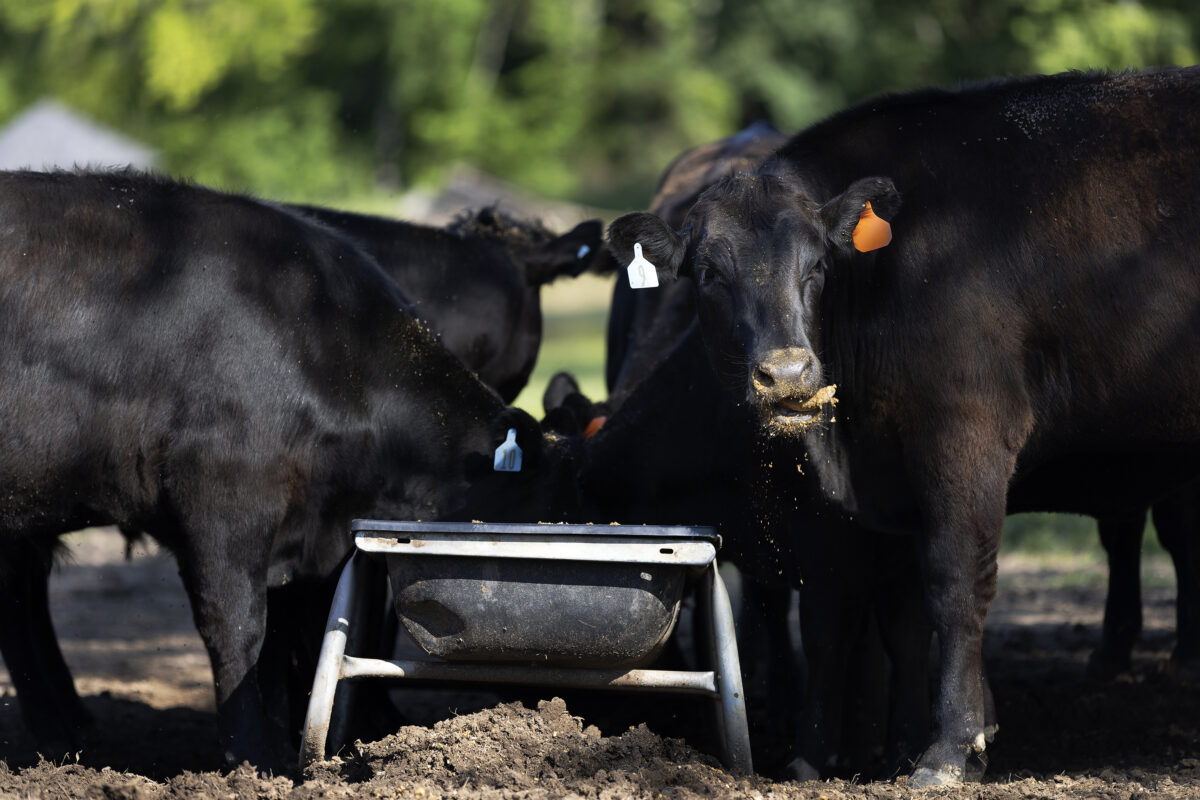
Once calves reach the 800-900 lb mark, they head to a feedlot (or feedyard) and remain for 4-6 months until they reach a finishing weight of 1300-1400 lb. Diets are carefully formulated in feedlots with gradual changes to the composition of the feed ration until calves reach the finishing stage.
Grass-finished cattle are finished on—you guessed it!—grass, which is typically pasture. While grass-finished cattle receive no grain, they may receive vitamins, minerals, or protein supplements. Finishing cattle on grass is a much lengthier process, taking anywhere from 24-30 months.
Once cattle have reached their finishing weight, they head to a facility for processing: whether a large commercial packing house or an independent plant supporting your local community. Read about processing and distribution in Where Does Beef Come From? Part 2.
